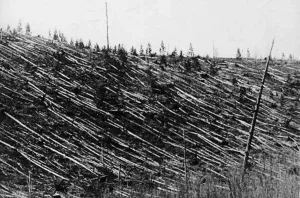Comets are one of the most fascinating celestial objects that orbit our sun, often capturing the imagination with their glowing comas and spectacular tails. These icy bodies, often referred to as “dirty snowballs,” have been hurtling through space since the formation of our solar system. They are composed of a mixture of rock, dust, water ice, and frozen gases. When a comet makes its journey close to the sun on its elongated elliptical orbit, a beautiful transformation occurs, leading to the formation of their iconic tails.
The Journey of a Comet
Comets spend most of their existence in the distant, cold reaches of the solar system, often in regions such as the Kuiper Belt or the Oort Cloud. These areas are teeming with icy bodies that were leftover from the solar system’s infancy. When gravitational disturbances, perhaps from a passing star or the influence of a giant planet in our solar system, nudge these icy bodies inward, they begin their long journey toward the sun.
Formation of Comet Tails
At the heart of every comet is its nucleus, a solid core of ice and dust. As the comet approaches the sun, the increase in temperature causes volatile compounds within the nucleus, like water, carbon dioxide, and ammonia, to sublimate. Sublimation is a process where a solid turns directly into a gas, bypassing the liquid state. This transformation releases gas and dust, forming a glowing coma, or the fuzzy-looking atmosphere that envelops the nucleus.
The Role of Solar Heating
The sun’s energy plays a crucial role in this sublimation process. As the comet gets closer, more material is ejected from the nucleus, increasing the size and brightness of the coma. This process highlights how dynamic and volatile a comet’s life can be when near the sun, contrasting with its otherwise static existence in the cold outer reaches of the solar system.
Interaction with Solar Wind
Once a comet gets close enough to the sun, it encounters the solar wind — a continuous flow of charged particles emanating from the sun. These particles, primarily electrons and protons, stream outward at high speeds, creating a sort of “wind” that interacts with the materials released by the comet.
Mechanisms Behind Tail Formation
The solar wind is instrumental in creating the comet’s tail. As the wind interacts with the coma, it pushes the gas and dust particles away from the nucleus, forming a tail that always points away from the sun. This interaction is a beautiful demonstration of physics in action, where electromagnetic forces shape the trajectory of tiny particles in space.
Types of Comet Tails
Comets typically manifest two distinct types of tails, each with unique characteristics rooted in their composition and the forces acting upon them.
Ion Tails
Ion tails are composed of ionized gas particles. When these particles are exposed to the sun’s ultraviolet radiation, they become charged. This ionization causes them to interact with the solar wind and the sun’s magnetic field, resulting in a tail that is often straight, narrow, and bluish or whitish in appearance. The ion tail can extend millions of kilometers into space and is a striking sight through telescopes.
Dust Tails
In contrast, dust tails consist of larger, non-ionized particles. These particles reflect sunlight, giving the dust tail its characteristic yellow or orange hue. Unlike the straighter ion tails, dust tails tend to curve along the comet’s trajectory due to the combined effects of the solar wind and radiation pressure. This curvature can provide insights into the comet’s orbit and the relative size of the dust particles.
Variability of Comet Tails
The appearance and behavior of a comet’s tail can vary widely depending on several factors, such as the comet’s size, composition, and proximity to the sun. Some comets develop long, bright tails that become visible even to the naked eye from Earth, while others may show only faint tails that quickly dissipate.
Case Study: Comet Hale-Bopp
To illustrate, consider Comet Hale-Bopp, one of the most observed comets of the 20th century. When it passed by Earth in 1997, it displayed a magnificent tail that spanned tens of millions of kilometers. Its bright appearance was due to its large nucleus, estimated to be about 60 kilometers in diameter, which released substantial amounts of gas and dust.
Observing Comet Tails
For amateur astronomers and sky enthusiasts, observing a comet can be a thrilling experience. The best time to spot a comet is usually when it is closest to the sun, as this is when the tails are most prominent.
Tips for Observing Comets
- Timing: Check astronomical forecasts for comet appearances. Websites like NASA or the International Astronomical Union often announce upcoming comets visible to the naked eye.
- Location: Find a dark location away from city lights. Light pollution can significantly reduce visibility.
- Equipment: Use binoculars or a small telescope to enhance your view. While some comets are visible without aid, optical instruments can reveal more details.
- Photography: If you’re interested in astrophotography, use a camera with manual settings to capture long-exposure shots. This can help capture the faint tail details that are not visible to the naked eye.
Common Misconceptions About Comet Tails
Despite their beauty and intrigue, comet tails are sometimes misunderstood. One common myth is that comets always have tails. In reality, comets only develop tails when they are close enough to the sun for sublimation to occur.
Debunking Myths
- Myth: Comet tails trail behind them as they move.
- Fact: Comet tails always point away from the sun due to solar wind, not necessarily in the opposite direction of their travel.
- Myth: All comets have long, visible tails.
- Fact: Many comets have faint tails that are not visible without a telescope.
Scientific Importance of Comet Tails
Comet tails aren’t just a spectacle; they also hold scientific significance. By studying the composition and behavior of comet tails, scientists can glean insights into the early solar system.
Research and Discoveries
- Chemical Composition: The analysis of tail material can reveal the presence of organic compounds, offering clues about the building blocks of life.
- Solar Wind Studies: Comets serve as natural laboratories for studying solar wind interactions, helping us understand more about the sun’s influence on the solar system.
- Space Missions: Missions like ESA’s Rosetta, which studied Comet 67P/Churyumov-Gerasimenko, have provided invaluable data on how comet activity changes as they approach the sun.
Environmental and Cultural Impact
Comets have been observed throughout human history, often seen as harbingers of change or omens. In modern times, they continue to inspire wonder and curiosity.
Cultural Significance
- Historical Records: Ancient civilizations meticulously recorded comet appearances, attributing various events to their presence.
- Modern Day: Today, comets are celebrated for their beauty and are often the subject of public interest and media coverage when they become visible.
Conclusion
Understanding why comets have tails and how these tails form enriches our appreciation of these celestial wanderers. Each comet provides a snapshot of the processes that occurred during the solar system’s formation, and their tails are like ephemeral fingerprints in the vastness of space. Whether you’re an avid astronomer or a casual observer, the next time you gaze upon a comet, you’ll have a deeper understanding of the intricate dance between these icy bodies and our sun.



